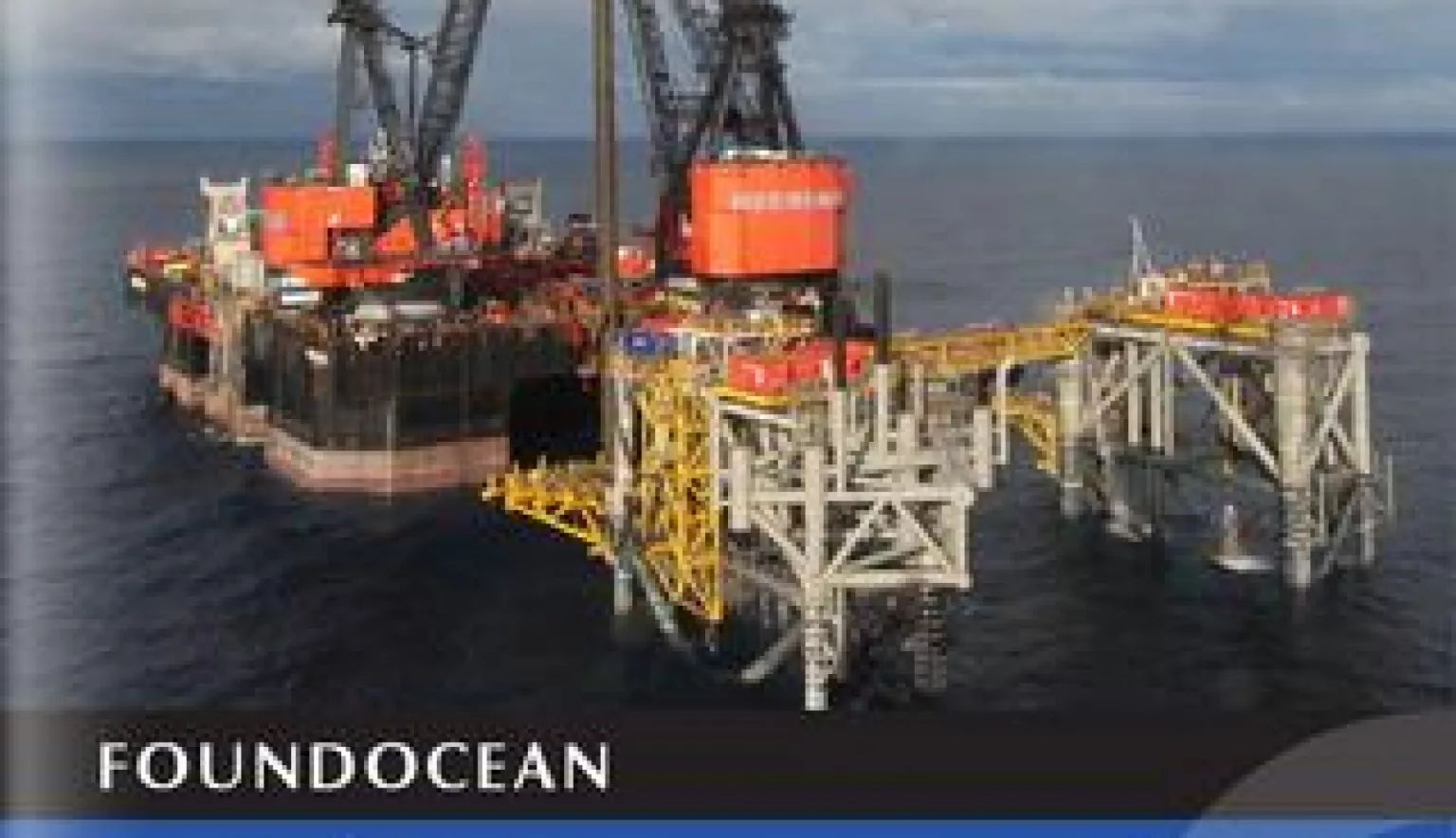The world’s largest subsea grouting company FoundOcean has diversified into structural grouting for offshore renewables in recognition of the changing nature of the UK’s energy demands.
Since experiencing considerable growth in 2010 due to its entry into the renewable energy market and expansion into emerging oil & gas regions, FoundOcean has been at the forefront of industry change and development.
Boasting more than 50 years of experience in subsea grouting for the oil & gas and offshore wind sectors, FoundOcean is proud to hold high status as the world’s largest dedicated offshore construction grouting company. Now working on some of the world’s most renowned offshore rigs, the Company is proud to have sustained a comprehensive health and safety management policy that has significantly aided with Zero Harm goals.
“Our primary area of expertise lies in securing structures to the seabed by foundation grouting, whether a single oil & gas platform or multiple installations for offshore wind turbines, and we also support the industry through consulting on many foundation designs for tidal, wave and offshore wind projects,” explained FoundOcean.
Furthermore, as part of the wider FoundOcean Group – a specialist in vibro-hammers, power units and auxiliary products – FoundOcean is able to leverage on the Group’s Dutch skill base, internal trainings and research facilities in order to continuously improve its operations. In line with this, the Company has allocated an Innovation Director who has the sole responsibility of overseeing the ongoing development of FoundOcean’s equipment.
The Company confirmed: “Martin Hardy, Innovations Director, has been behind many of the key technological breakthroughs the company has made in the past 20 years, in addition to providing advice to clients who are facing technical challenges.
“Hardy is accompanied by an experienced management team whose knowledge of the offshore and subsea market can be traced back to the 1960s, and many of our company directors have been with us since the beginning, when the Company was known as Wimpey Laboratories.”
FIVE DECADES LATER
Established in 1966 and later becoming Wimpey Geotech, Wimpey Laboratories was the first company in the world to develop the process of offshore grouting; a process which is now adopted worldwide on a vast number of subsea installations.
Operating under the Wimpey banner for three decades, in 1993, the offshore division of Wimpey Geotech was acquired by SeaMark Systems, which was swiftly followed by the sale of the namesake Sea Marker product in order to focus solely on offshore grouting. The resulting Company became known as FoundOcean.
Half a century later and Wimpey’s grouting services went on to become award-winning industry practice, accompanied by a whole host of value-add solutions; diversifying into offshore renewables, life extension solutions for offshore assets including freespan correction, pipeline rehabilitation and jacket strengthening, maintenance and repair. FoundOcean solutions therefore have the capability to prolong the life of offshore energy production, which is a very welcome service for those with operations in the industry.
“Our 49 years of grouting experience has been perfected by successfully completing more than 1,000 offshore projects in the oil & gas and offshore renewable industries including the award-winning Ormonde Offshore Wind Farm, contributing to our title as experts in subsea grouting,” the Company further added.
INCIDENT-FREE STRATEGY
Committed to maintaining a conscious culture towards health, safety and the environment, FoundOcean applies its years of in-depth knowledge of the industry to prevent unnecessary harm to employees to protect them from the harsh working conditions.
“As a DNV-accredited to ISO 9001 and ISO 14001 quality standards since 2006, we work to continually identify and eliminate any foreseeable hazards and minimise the probability of incidents resulting in personal injuries, illnesses, damage to property and the environment,” said the Company.
With an annual review of its policies, FoundOcean is able to monitor the effectiveness of its current health and safety practices and ensure the process of continuous improvement is maintained.
The Company added: “Our incident and injury-free strategy is built around a multi-layered learning and development programme, embedded employee wellbeing culture, and focus to build a sustainable business for the future. As the industry is subject to undergo change due to a number of variables in the future, it is important that we keep our policies as up to date as possible.”
Moreover, all FoundOcean personnel working offshore have to undertake an offshore survival course and subsequent refresher courses at an approved offshore petroleum industry training board centre; where staff knowledge of Company procedures can be put to the test.
OFFSHORE WIND
After applying its wealth of subsea grouting knowledge to the offshore wind sector in 2010, FoundOcean’s first renewable project – the Ormonde Offshore Wind Farm – became the recipient of a national ‘Large Project’ award at the inaugural Energy Awards provided by RenewableUK.
“We quickly proved our versatility and competence with a range of offshore wind foundation types including monopole transition pieces at the 576MW Gwynt y Môr, jacket-style foundations at the 30MW Thornton Bank, and tripod foundations at the 400MW Tiranel Wind Farm Borkum phase two,” highlighted the Company.
Ormonde Offshore Wind Farm is just one example of industrial excellence, displaying the huge amount of structural design work that goes into offshore renewable energy projects. Located 10 kilometres (km) off Barrow-In-Furness in the Irish Sea and covering an area of 8.7km2, Ormonde comprises 30 RePower 5MW wind turbines producing a capacity of 150MW and one substation; this is enough energy to supply the equivalent of approximately 100,000 homes a year with clean power.
FoundOcean explained the structural building process: “The 31, four-legged OWEC Quattropod foundations were secured to the seabed by four main legs which were inserted into pre-driven piles. The connection between the leg and the pre-driven piles was made by injecting FoundOcean cement grout into the annulus around each pile and stab-in-leg.”
Conclusively, Ormonde served as a great marker that highlights the potential for large scale offshore wind projects around the world. For FoundOcean, this was the first multiple-jacket grouting project that demonstrated the flexible, scalable nature of the Company’s operations and its ability to diversify in the face of changing energy requirements.


































